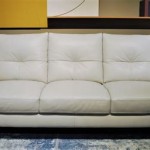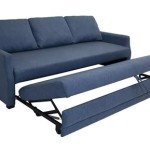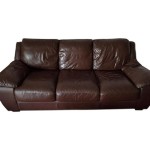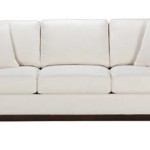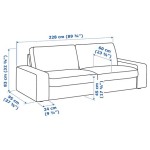What Is The Difference Between A Sofa And A Couch?
The terms "sofa" and "couch" are often used interchangeably, leading to confusion about whether there is a genuine distinction between the two. While both describe upholstered seating designed for more than one person, subtle differences in origin, style, and intended use contribute to their distinct identities. Understanding these nuances can assist in selecting the most appropriate piece of furniture for a specific space and purpose.
The distinction between a sofa and a couch is not always clear-cut, and regional variations in usage further complicate matters. However, by examining the historical context, design characteristics, and perceived formality associated with each term, a more comprehensive understanding of their differences can be achieved.
Historical Origins
Tracing the historical development of the terms "sofa" and "couch" reveals differing origins and cultural influences. The word "sofa" is derived from the Arabic word "suffa," which referred to a raised platform or bench covered in cushions and rugs. These platforms were commonly found in Middle Eastern cultures and were used for lounging, sleeping, and socializing. As European travelers encountered these platforms, they adopted the term, adapting it to describe similar pieces of furniture in their own homes.
The European sofa initially emerged as a symbol of wealth and status, often adorned with elaborate upholstery and intricate details. These early sofas were primarily intended for formal settings, such as drawing rooms and parlors, and served as a focal point for social gatherings and aristocratic displays. The design emphasized elegance and comfort, reflecting the refined tastes of the upper classes.
In contrast, the word "couch" has its roots in the Old French word "couche," meaning "to lie down." This etymology suggests a stronger association with relaxation and reclining. Historically, couches were often designed with a prominent headrest or raised end, facilitating a reclining posture. This design feature distinguished them from sofas, which were typically intended for more upright seating.
The couch evolved as a more versatile piece of furniture, suitable for both formal and informal settings. It was often found in bedrooms, studies, and other spaces where relaxation and comfort were prioritized. The design of the couch reflected this adaptability, ranging from simple, functional models to more ornate and decorative pieces.
Design and Construction
While modern designs blur the lines, certain design characteristics have historically been associated with sofas and couches. Sofas, particularly those inspired by traditional styles, often feature a more structured and formal appearance. They tend to have a defined back, arms, and seat cushions, creating a distinct separation between the different sections of the furniture. The upholstery is typically more tailored and refined, contributing to the overall sense of elegance.
The frame of a sofa is often constructed from solid wood, providing a sturdy and durable foundation. The legs may be visible or concealed, depending on the design. The overall silhouette of a sofa tends to be more upright and angular, reflecting its intended use for formal seating.
Couches, on the other hand, often exhibit a more relaxed and informal aesthetic. They may have a lower back, softer cushions, and a more rounded or curved shape. The upholstery tends to be less structured and more plush, inviting users to sink in and relax. The arms of a couch may be lower or absent altogether, further contributing to its casual appeal.
The frame of a couch may be constructed from a variety of materials, including wood, metal, or synthetic composites. The legs may be less prominent or even absent, creating a lower profile. The overall silhouette of a couch tends to be more relaxed and inviting, reflecting its intended use for lounging and reclining.
The presence or absence of specific features can also contribute to the perceived difference between a sofa and a couch. For example, a sectional sofa, which consists of multiple interconnected pieces, is typically referred to as a sofa due to its size and complexity. Similarly, a sleeper sofa, which includes a hidden mattress, is generally categorized as a sofa due to its dual functionality.
Perceived Formality and Usage
The perceived level of formality associated with sofas and couches also influences their usage and placement within a home. Sofas are often considered more formal and are typically found in living rooms, drawing rooms, and other spaces designed for entertaining guests. Their structured design and elegant upholstery contribute to a sense of sophistication and refinement.
The arrangement of furniture around a sofa often reinforces its role as a focal point for social interaction. Sofas are typically paired with armchairs, coffee tables, and other accessories to create a cohesive and inviting seating area. The overall ambiance of the space is designed to promote conversation and relaxation in a formal setting.
Couches, conversely, are often perceived as more casual and are typically found in family rooms, dens, and other spaces designed for relaxation and informal gatherings. Their softer cushions and relaxed design invite users to unwind and enjoy leisure activities, such as watching television, reading, or napping.
The arrangement of furniture around a couch often reflects its role as a comfortable and versatile seating option. Couches may be paired with ottomans, throw pillows, and blankets to enhance the level of comfort and relaxation. The overall ambiance of the space is designed to promote a sense of informality and ease.
The choice between a sofa and a couch ultimately depends on individual preferences and the intended use of the furniture. If the primary goal is to create a formal and elegant seating area, a sofa may be the more appropriate choice. If the primary goal is to create a comfortable and relaxing space for lounging and leisure activities, a couch may be the better option.
The interchangeability of the terms further complicates the matter. Many manufacturers and retailers use the terms "sofa" and "couch" interchangeably in their marketing materials, blurring the lines between the two. This can make it difficult for consumers to discern the true differences between the two types of furniture.
Ultimately, the distinction between a sofa and a couch is subjective and depends on personal interpretation. While historical origins, design characteristics, and perceived formality can provide guidance, the most important factor is whether the furniture meets the individual's needs and preferences.
The evolution of furniture design continues to blur the lines between traditional classifications. Modern sofas and couches often incorporate elements of both styles, creating hybrid pieces that are both elegant and comfortable. This trend reflects a growing desire for furniture that is both functional and aesthetically pleasing, capable of adapting to a variety of settings and lifestyles.
Therefore, instead of focusing solely on the label of "sofa" or "couch," it is more beneficial to consider the specific features and characteristics of each piece of furniture. Factors such as size, shape, upholstery, and construction should be carefully evaluated to determine whether the furniture is suitable for the intended purpose and setting.
The selection of seating should also be guided by the overall design aesthetic of the space. A traditional sofa may be a better fit for a formal living room, while a contemporary couch may be more suitable for a modern family room. The furniture should complement the existing décor and contribute to the overall ambiance of the space.
In conclusion, the difference between a sofa and a couch is a complex and nuanced issue. While historical origins, design characteristics, and perceived formality can provide guidance, the ultimate decision depends on individual preferences and the intended use of the furniture.

Faq What S The Difference Between A Sofa And Couch Wfmo

Sofa Vs Couch Which One Is Better Love My Beds

Faq What S The Difference Between A Sofa And Couch Wfmo

What Is The Difference Between A Sofa And Couch

Sofa Vs Couch What Is The Difference

Sofa Vs Couch The Big Debate

Sofa Or Couch Quick And Dirty Tips

What S The Difference Between Sofa And Couch

What S The Difference Between Sofa And Couch

Faq What S The Difference Between A Sofa And Couch Wfmo



